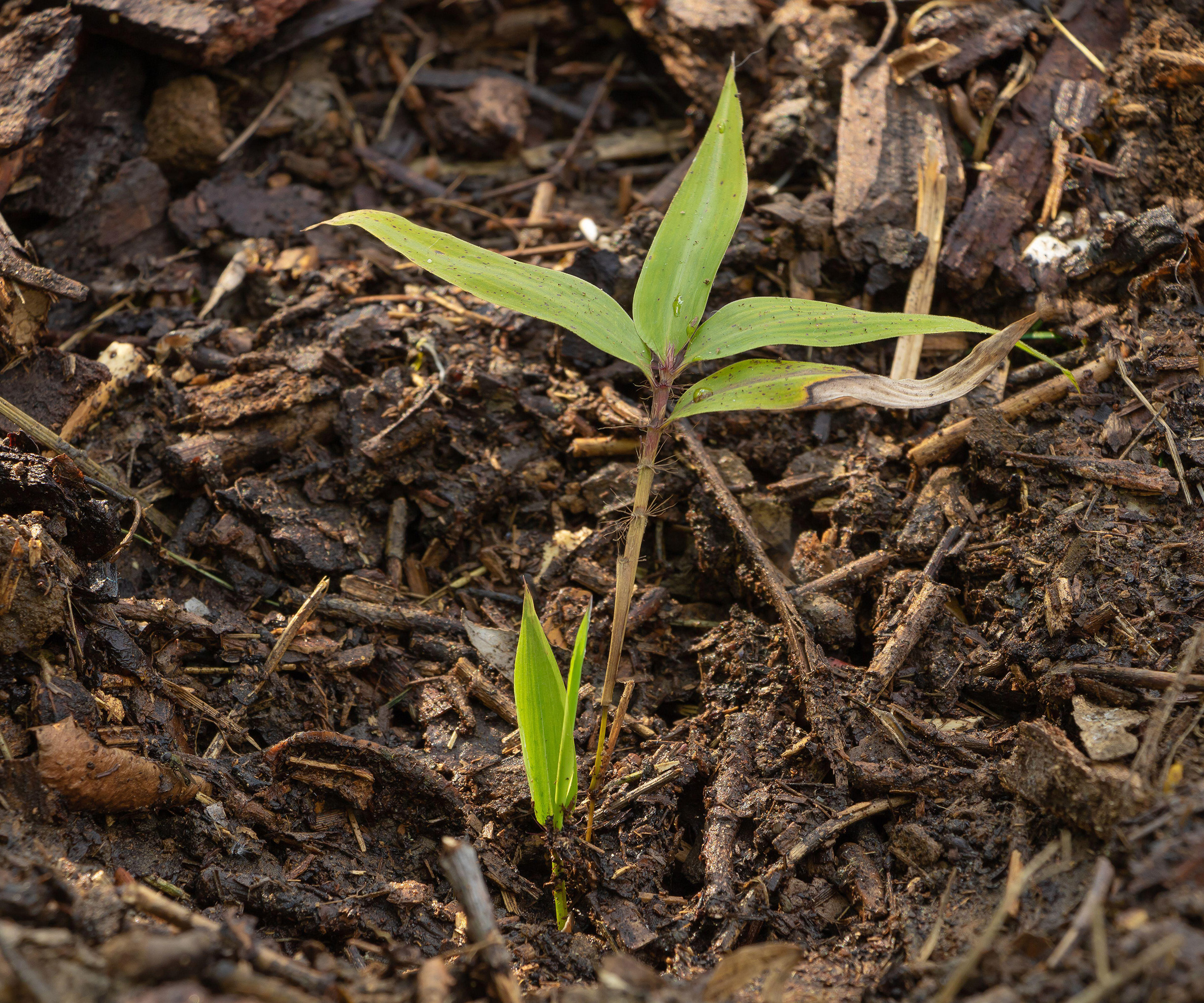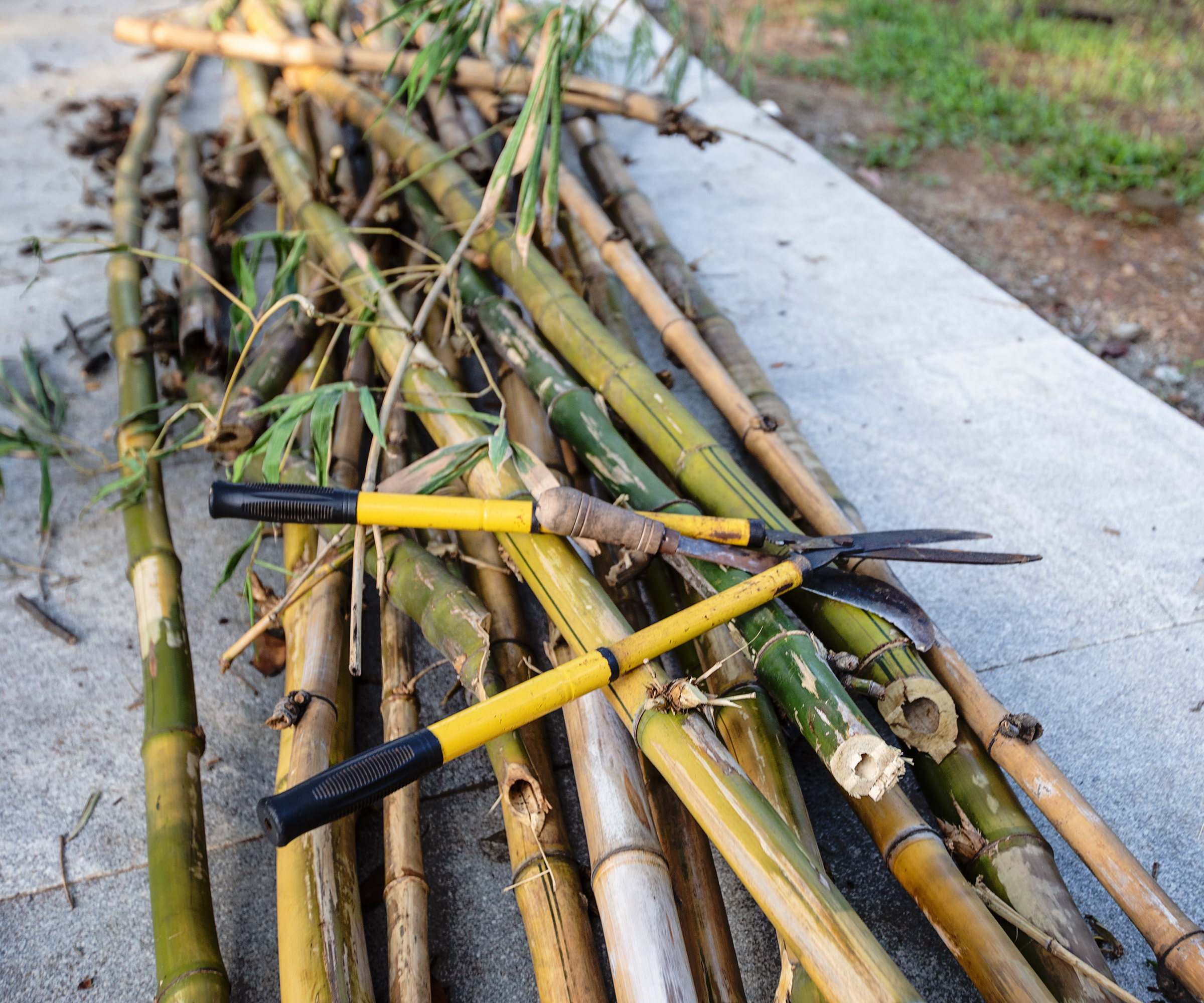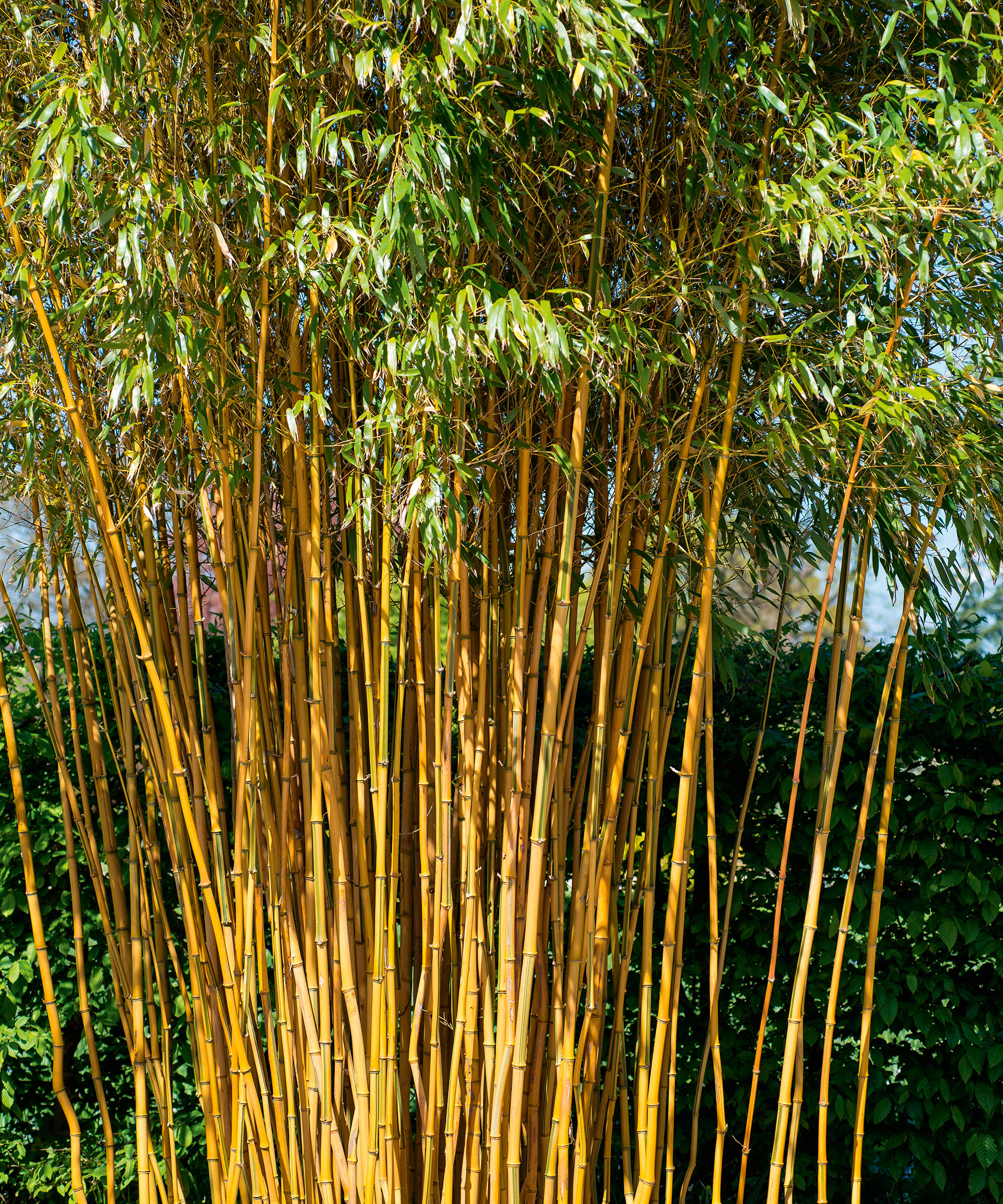Dealing with an unruly patch of bamboo can feel a bit like trying to stop a runaway train, honestly. It grows so quickly, and its roots, well, they just seem to spread everywhere, making themselves at home where you really don't want them. You might be looking out at your garden, or perhaps your neighbor's, and thinking, "How do I even begin to get this green monster to stop?" Well, you're certainly not alone in that thought. Many folks find themselves in this exact spot, wondering about the best ways to reclaim their outdoor space from this rather persistent plant.
It's true that bamboo, for all its graceful looks in the right spot, can become quite the challenge when it decides to take over. Its underground network of roots, known as rhizomes, are pretty good at spreading out, sometimes popping up in places you'd least expect. This can lead to a real headache for homeowners, creating a situation where your garden starts to look less like a planned haven and more like a wild thicket. So, getting a handle on it becomes a pretty important task if you want your yard back.
The good news is that there are, as a matter of fact, several straightforward and quite effective approaches you can use to put an end to bamboo's spread. Whether you're open to using some stronger solutions or prefer something a little more gentle for the earth, there are options available. This article will walk you through various ways to get rid of bamboo, helping you pick the approach that feels right for your situation and, you know, finally get your outdoor area back under your control.
- Hotels Near San Ramon Golf Club
- Sabbaoth Meaning
- Mila Malden
- Best Times To Visit Pathivara
- Ryan Evans From Counting Cars
Table of Contents
- Why is getting rid of bamboo a big deal?
- What are some ways to kill bamboo?
- Is there a best way to kill bamboo?
- What if it keeps coming back?
Why is getting rid of bamboo a big deal?
You might be asking yourself, "Why is everyone so worried about this plant?" Well, the thing about bamboo is that it's a very fast grower, almost unbelievably so. It doesn't just grow upwards; it spreads out underground too. Those root systems, the rhizomes, are really the source of the trouble. They can stretch quite a distance, popping up new shoots in your lawn, under your patio, or even, you know, making their way into your neighbor's garden. This kind of spread can cause a lot of worry for homeowners, because once it takes hold, it's pretty determined to stay. It can make your yard feel a bit out of control, and nobody really wants that.
So, the concern isn't just about a plant looking a little messy. It's about its ability to truly take over a space, pushing out other plants you might want to grow, and just generally making things difficult. For instance, if you have a small garden, a bamboo patch can quickly turn it into a dense thicket, leaving very little room for anything else. This is why people often feel a strong need to get it under control, or to put an end to its presence altogether. It's a matter of keeping your outdoor living area pleasant and usable, which is pretty important for a lot of us, right?
Understanding how to kill bamboo's sneaky ways
To truly get a handle on how to kill bamboo, it helps to know a little about how it behaves. The plant's real strength, you see, comes from those underground stems. They're not just roots; they're actually a kind of modified stem that can store a lot of energy. This energy allows the bamboo to send up new shoots, sometimes quite far from the original plant. It's almost like a hidden network, constantly trying to expand its territory. This means that just cutting down the visible stalks isn't enough to stop it. The plant will simply use its stored energy to grow new ones, often with more vigor than before. You might cut it down, and then, a few weeks later, new green stalks are poking through the ground, as if nothing happened. It's a bit frustrating, to be honest.
This characteristic of bamboo, its capacity to regenerate from even a tiny piece of root, is what makes it so persistent. It's why many people find it such a tough opponent in the garden. You can pull at it, you can chop at it, but if you don't deal with the part underground, it's just going to keep coming back. That's why, when we talk about putting an end to bamboo, we're really talking about targeting that hidden network. It's the key to making sure it doesn't return, which is, you know, the whole point of the effort. Understanding this helps you choose the right approach to how to kill bamboo, one that actually works in the long run.
What are some ways to kill bamboo?
When you're ready to tackle this plant, you'll find there are a few main paths you can take. Some people prefer to use things that are readily available, perhaps even in their kitchen, while others might lean towards products designed specifically for this kind of garden work. The important thing is that there are options, and what works best for one person might be different for another, depending on how much bamboo you have and how much effort you're willing to put in. So, you have choices, which is pretty good news, right?
One approach involves using certain liquids that can help stop the plant's growth. Another way is to simply remove the plant physically, which can be quite a bit of work but is very direct. Then there are also ways that involve cutting the plant back over and over again, which, in a way, wears it down over time. Each method has its own set of steps and considerations, and knowing about them all helps you pick the one that feels most comfortable and effective for your own yard. It's about finding your own way to get the job done, really.
Can you kill bamboo with chemicals?
Yes, you can certainly use specific chemical solutions to help put an end to bamboo's growth. These products are often called herbicides, and they are made to stop plants from living. When you choose this path for how to kill bamboo, the idea is to apply the chemical to the bamboo plant itself, usually to its leaves or freshly cut stems. The plant then takes in the chemical, which travels down to those stubborn underground parts, stopping the plant from being able to grow anymore. It's a pretty direct way to handle things, and for some, it's a preferred option because it can be quite effective, especially for larger, more established patches of bamboo. You just need to make sure you follow the instructions on the product very carefully, of course.
There are different kinds of these products available, and some are designed to work more quickly than others. Some people choose a product that targets a wide range of plants, while others might look for something more specific. The key is to get the chemical to the plant's system so it can reach the rhizomes. This is why you often hear about applying it to freshly cut stalks, because the plant is more likely to absorb it then. So, if you're thinking about using a chemical solution, just be sure to pick the right one for your situation and apply it with care, paying attention to what the label says about safety and how to use it properly. It's about being responsible while still getting the job done, you know?
How to kill bamboo naturally?
If you're someone who prefers to stay away from stronger chemicals, you'll be glad to know there are some natural ways to approach how to kill bamboo permanently. One common natural item that people often turn to is vinegar. The idea with vinegar is that its acidic nature can help to break down the plant's structure. You would typically apply a strong solution of vinegar directly to the bamboo, particularly to cut stems or young shoots. It works by essentially drying out the plant, making it unable to keep growing. This method might take a bit more time and repeated applications compared to chemical options, but it's a gentler choice for your garden and the surrounding environment, which is something many people care about a lot.
Another natural approach involves simply cutting the bamboo down repeatedly. This might sound too simple, but the idea is to exhaust the plant's energy reserves. Remember those underground rhizomes that store energy? By constantly cutting down any new growth as soon as it appears, you prevent the plant from making new food through its leaves. Over time, with consistent effort, the rhizomes will run out of stored energy and eventually weaken and stop producing new shoots. This method requires a lot of patience and diligence, as you'll need to keep an eye out for any new growth and snip it right away. It's a bit like a war of attrition, really, but it can be quite effective if you stick with it. Some people also try flooding the area, or covering it with thick tarps to block out all light, which also helps to starve the plant of energy. So, there are definitely options for a more natural way to get rid of this persistent plant.
Is there a best way to kill bamboo?
When it comes to deciding on the "best" way to get rid of bamboo, it really depends on your specific situation. There isn't a single answer that works for absolutely everyone, because the size of your bamboo patch, how much time you have, and your personal preferences for garden care all play a part. What might be super effective for a small clump could be an incredibly huge task for a large, established area. So, you know, it's about finding the right fit for your own yard. Some people find that a combination of methods works better than just one, especially for really stubborn bamboo. It's almost like you have to try a few things to see what truly makes a difference for your particular bamboo problem.
For instance, if you have a very small, manageable patch, you might find that just digging it out is the most direct and satisfying approach. But if it's spread far and wide, that might not be practical. Or, if you're in a hurry to see results, a chemical solution might seem like the quickest path. However, if you're willing to put in the consistent effort over time and prefer not to use chemicals, the natural methods could be the "best" for you. The key is to pick a strategy that you can stick with, because consistency is pretty important when you're trying to stop bamboo from growing back. It's about what you can realistically do, honestly.
Digging it out - a direct approach to how to kill bamboo
For many, the most certain way to get rid of bamboo is to physically dig it out. This method for how to kill bamboo is very direct, and it gives you immediate results, assuming you do it thoroughly. The main idea here is to remove all of those spreading underground parts, the rhizomes. If you leave even a small piece of a rhizome behind, it has the potential to sprout a new plant, and then you're back to square one, which is, you know, not ideal. So, when you're digging, you really need to be quite careful and make sure you get every single bit of that root system. It's a bit like searching for buried treasure, but the treasure is what you want to remove.
You'll need a good sturdy shovel, and possibly a pickaxe if the ground is very hard or the roots are really thick. Start by digging around the edges of the bamboo patch, then work your way inwards. As you dig, pull out all the rhizomes you can see. They often look like thick, woody roots, sometimes with little bumps where new shoots might form. It can be quite a workout, especially for a larger area, but the satisfaction of seeing all those roots removed is pretty great. This method is often recommended as the most effective because it directly removes the source of the plant's energy and ability to spread. It's a lot of physical work, yes, but for many, it's the most reliable way to truly put an end to bamboo's presence in their garden. It just feels good to know it's really gone, you know?
What if it keeps coming back?
Even after you've put in a lot of effort, sometimes bamboo can be incredibly stubborn and seem to reappear. This can feel pretty frustrating, especially after all that hard work. But don't lose heart; it just means that a tiny piece of those underground parts, those rhizomes, was missed or perhaps had enough stored energy to send up one more shoot. It's not uncommon for this to happen, especially with a plant that's so determined to grow. The key here is not to give up, but to simply adjust your approach a little bit. It's almost like a game of whack-a-mole, where you just keep hitting the new sprouts as they appear, which, you know, eventually wears the plant down.
If you find new shoots popping up, you have a couple of options. You can either go back to digging out those new sprouts and any attached rhizomes, making sure to get a wider area this time. Or, if you're using a chemical approach, you can reapply the treatment to the new growth. For those using natural methods like constant cutting, it simply means continuing that routine with even more diligence. The plant is basically trying to test your resolve, and the way to win is to show it that you're even more persistent. So, seeing new growth isn't a failure; it's just a sign that you need to keep going with your chosen method, perhaps with a little more focus on those newly emerging bits.
Keeping bamboo gone for good - a final thought on how to kill bamboo
To really make sure bamboo stays gone for good, and to truly master how to kill bamboo, the most important thing is consistency. Whether you choose to remove it by hand, use a specific product, or simply keep cutting it back, sticking with your plan over time is what makes the difference. It's not usually a one-time fix, especially for larger or older patches. You'll want to keep an eye on the area for a while, perhaps for several months, just to catch any new shoots that might try to emerge. Think of it as a long-term project, rather than a quick task. This ongoing attention helps to make sure that any tiny bits of rhizome that were missed don't get a chance to establish themselves again. It's about being vigilant, really.
Some people also find it helpful to install a physical barrier in the ground after removing the bamboo, especially if they're worried about it spreading from a neighbor's yard or from a spot they couldn't fully clear. These barriers are typically made of a sturdy material and are buried vertically in the soil to stop rhizomes from growing across a boundary. This can be a really good preventative step, you know, to keep new bamboo from creeping into your newly cleared space. So, by combining a thorough removal method with consistent follow-up and perhaps a barrier, you can truly get your garden back from this rather determined plant. It's all about making sure it doesn't get a second chance to take over your space, which is pretty important for a peaceful garden, wouldn't you say?
So, we've talked about how bamboo can be a bit of a handful with its quick growth and spreading roots. We looked at why it's such a challenge to manage and how its underground system works. We also went over different ways to get rid of it, from using special liquids to more natural approaches like vinegar or just cutting it down over and over. And, we discussed how digging it out can be a very direct way to solve the problem, making sure to get all those sneaky roots. Finally, we touched on what to do if it tries to come back and how staying consistent is key to keeping your yard free of it for good.
Related Resources:



Detail Author:
- Name : Olen Stehr
- Username : lorna42
- Email : crystal23@gmail.com
- Birthdate : 1981-08-15
- Address : 3543 Gregoria Junctions Legrosview, WA 47678-2305
- Phone : 820-360-6451
- Company : Gaylord-Dare
- Job : Baker
- Bio : Ducimus itaque officiis rerum porro. Iste magni fugit voluptatem tenetur aperiam. Consequatur non magnam a ea distinctio.
Socials
linkedin:
- url : https://linkedin.com/in/nd'amore
- username : nd'amore
- bio : Dolorem et deserunt alias deleniti.
- followers : 6474
- following : 2254
facebook:
- url : https://facebook.com/nelle.d'amore
- username : nelle.d'amore
- bio : Ut nihil aut quidem non sunt maxime earum.
- followers : 1858
- following : 2133
twitter:
- url : https://twitter.com/nelled'amore
- username : nelled'amore
- bio : Nobis possimus ut ea. Error nihil fugiat occaecati provident modi sit. Quo esse et dolorem a aliquid. Et sequi rerum sunt et nam.
- followers : 2860
- following : 2301